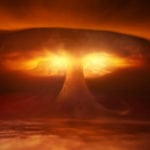 Creepy
Creepy  Creepy
Creepy  Movies and TV
Movies and TV 10 Movies That Get Elite Jobs Right, According to Experts
 Weird Stuff
Weird Stuff 10 Times Real Laws Were Based on Bizarre Hypotheticals
 Animals
Animals 10 Inspiring Tales of Horses Being Human
 Mysteries
Mysteries Top 10 Haunting Facts About the Ghost Ship MV Alta
 History
History 10 Surprising Stories About the Texas Rangers
 Humans
Humans 10 Philosophers Who Were Driven Mad by Their Own Theories
 Miscellaneous
Miscellaneous 10 Video-Game-Worthy Weapons and Armors from History
 Weird Stuff
Weird Stuff 10 Psychics Who Accurately Predicted Wartime Events
 The Arts
The Arts 10 Pieces of Art Inspired by a Broken Heart
 Creepy
Creepy 10 Death Superstitions That Will Give You the Creeps
 Movies and TV
Movies and TV 10 Movies That Get Elite Jobs Right, According to Experts
 Weird Stuff
Weird Stuff 10 Times Real Laws Were Based on Bizarre Hypotheticals
Who's Behind Listverse?

Jamie Frater
Head Editor
Jamie founded Listverse due to an insatiable desire to share fascinating, obscure, and bizarre facts. He has been a guest speaker on numerous national radio and television stations and is a five time published author.
More About Us Animals
Animals 10 Inspiring Tales of Horses Being Human
 Mysteries
Mysteries Top 10 Haunting Facts About the Ghost Ship MV Alta
 History
History 10 Surprising Stories About the Texas Rangers
 Humans
Humans 10 Philosophers Who Were Driven Mad by Their Own Theories
 Miscellaneous
Miscellaneous 10 Video-Game-Worthy Weapons and Armors from History
 Weird Stuff
Weird Stuff 10 Psychics Who Accurately Predicted Wartime Events
 The Arts
The Arts 10 Pieces of Art Inspired by a Broken Heart
10 Injustices By The Good Guys Of History
War never changes. Nations and armies stood up against madmen and dictators, warlords and butchers. But even the forces of these “good guys” have been responsible for war crimes, atrocities, and injustices. In fighting the good fight, they arguably became the very evils they sought to eradicate.
10Anti-Gadhafi Insurgents
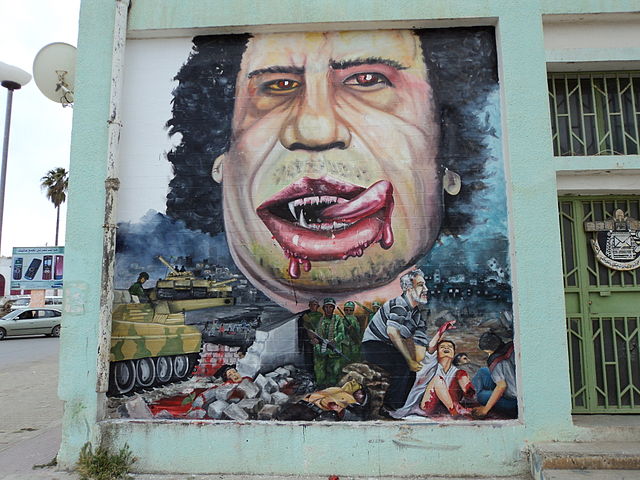
In 2011, riots and protests in Libya escalated into a full-scale rebellion against Muammar Gadhafi’s rule. The rebels quickly attracted support from the international community, which vowed to lend its support against the deranged dictator and his brutal, oppressive regime. The United States froze Gadhafi’s assets while the French sent military aid. A coalition of nations later conducted bombing raids, one of which reportedly killed Gadhafi’s youngest son and three of his grandchildren.
Civil war raged for months, and while the rebels were initially viewed as plucky underdogs fighting the good fight, atrocities of their own soon came to light. There were cases where doctors pleaded to no avail as armed mobs began killing patients suspected of being loyal to Gadhafi. In some cases, captives were summarily executed by shooting or hanging. Some rebel soldiers were also guilty of indiscriminately firing on civilians, with women and children often caught in the crossfire. A United Nations inquiry found that fighters on both sides were guilty of war crimes.
9Atrocities During The Bosnian War
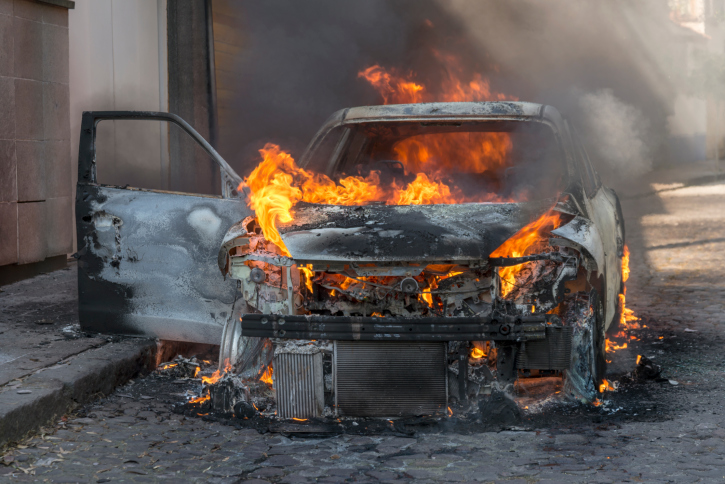
During the 1990s, the former Yugoslavia collapsed into a brutal ethnic conflict. In Bosnia and Herzegovina, an incursion by Serbian and Croatian forces soon turned into a nightmarish campaign of slaughter and mass rape. Thousands of Muslim Bosniaks were murdered and millions were displaced.
While the inhuman conduct of the Serbian and Croatian armies has often been documented, it should also be mentioned that some Muslim forces were also guilty of such crimes. Hundreds of Bosnian Croat and Serb civilians were murdered over the course of the conflict, with some of the bodies appearing to have been beheaded. Many of the killings were believed to be the work of overseas Mujahedeen fighters.
As to how the Mujahedeen arrived in Bosnia and acquired the firepower necessary to fight, intelligence reports have revealed how US intervention in Afghanistan and the Middle East during the ’80s and ’90s required the cooperation of various Islamist groups. When the war in Bosnia erupted, America agreed to repay that debt by allowing weapons and foreign fighters to be smuggled into the country. Meanwhile, the secret services of Ukraine, Greece, and Israel smuggled weapons and armaments in support of the Serbs and Croats—weapons that were eventually used to butcher innocent people.
We also have to consider the tragic events allowed to happen simply by inaction. For instance, in July 2014, a court in The Hague ordered the Netherlands to compensate the families of 300 Muslim men who were massacred by Bosnian Serbs after Dutch peacekeeping forces expelled them from the safety of their compound. Indeed, thousands of lives could have been saved if the world had acted sooner to end the conflict.
8The Baralong Incidents
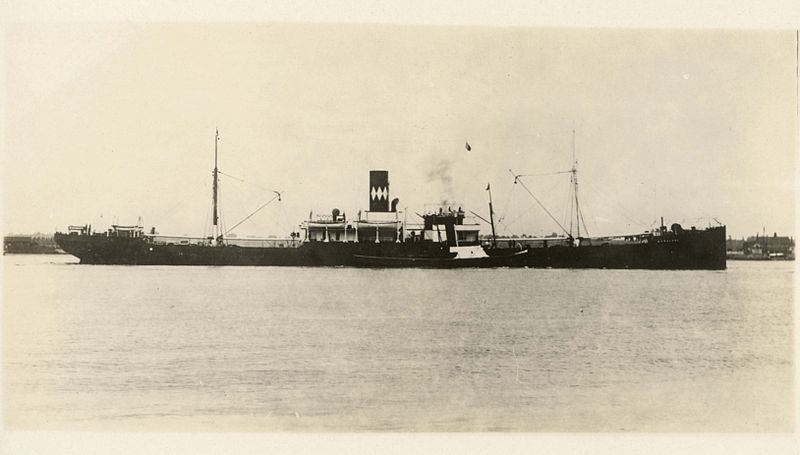
History has become muddled throughout the years, especially in the case of the HMS Baralong and its role in naval warfare during World War I. Some accounts suggest that after the RMS Lusitania was sunk by a German submarine on May 1915, the captain of the Baralong, Lt. Commander Godfrey Herbert, was given a message by the Admiralty: “Take no prisoners from U-boats.”
On August 19, 1915, the German submarine U-27 stopped a ship, the Nicosian, believed to be carrying munitions bound for France. When the German boarding party discovered the weaponry (along with some military mules), they ordered the Nicosian’s crew to board the lifeboats and prepared to sink the ship. That’s when the Baralong arrived on the scene, flying the flag of the neutral US, and signaled its intent to rescue the Nicosian’s crew, luring the German submarine into a false sense of security.
Moments later, the Baralong hoisted its true colors and began blasting the U-boat. Only a dozen Germans survived by swimming to the Nicosian, where they joined the boarding party still onboard. Herbert then sent several Royal Marines onto the Nicosian.
Accounts tell of how the British soldiers fired indiscriminately at the Germans, even after they tried to surrender. Rumors at the time claimed that the enemy sailors were not shot, but were actually burned in the ship’s furnace.
The German public would only learn of “The Baralong Incident” from American newspapers—the British kept the matter hush-hush. Despite the publicity, another incident occurred a month later. Once again flying US colors, the Baralong was able to get close to a German submarine, the U-41. This time the ship began firing at the U-boat without even hoisting the British flag. When the two surviving German sailors boarded a lifeboat, the British responded by ramming them. It was only when the Baralong’s crew saw the Germans still clinging on for dear life that they decided to help them aboard their ship.
7The Biscari And Canicatti Massacres

The Biscari Massacre actually refers to two related incidents during World War II. On July 14, 1943, following the Allied invasion of Sicily, American soldiers belonging to the 45th Infantry Division were pinned down by sniper fire. Frustrated by their situation, the soldiers took out their anger on 73 POWs (two were German, the rest Italian). In the first incident, a group of POWs had their clothes and valuables removed before being executed on the orders of Captain John Compton. In the second, POWs were lined up in two parallel rows and gunned down by Sergeant Horace West, who was apparently acting on his own initiative.
When General Omar Bradley found out about these atrocities, he informed General George Patton, who was the immediate superior of the soldiers involved. Patton recorded his attempt to sweep the massacre under the carpet in his diary, telling Bradley that the reports were “probably an exaggeration” and suggested that the Army claim the men had been snipers or were shot while trying to escape. “Anyhow, they are dead, so nothing can be done about it.”
Bradley was outraged at Patton’s attempted cover-up and Compton and West were tried for their crimes. Compton was acquitted while West was sentenced to life imprisonment, although that sentence was later commuted.
The Canicatti Massacre was an unrelated incident that happened to occur on the same day. After their town was captured by American forces, Italian civilians began looting a factory looking for liquid soap. Lt. Colonel Herbert McCaffrey ordered them to disperse. When the civilians ignored him, he ordered his men to fire—but none of them did. This so incensed McCaffrey that he began shooting wildly into the crowd, killing eight people. One of the victims was a young child who McCaffrey shot in the stomach.
6The Goumiers
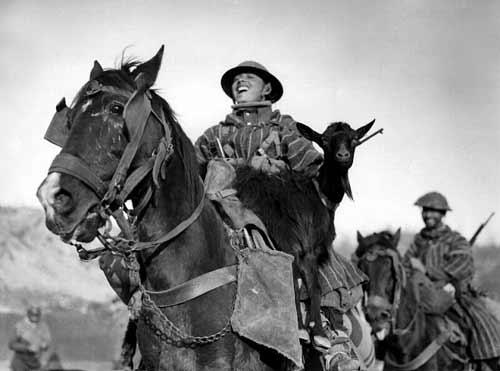
For the French to be on Italian shores in 1943 was significant—in a way, they were slowly but surely avenging their humiliation in 1940. A large portion of the French forces were actually colonial troops, including a contingent recruited from tribes in the Atlas Mountains of Morocco: the Goumiers. These fierce warriors were known for their bravery in battle and skill at mountain fighting—but also for their brutality toward civilians in occupied territories.
While other colonial troops, including Tunisians, Algerians, and non-Berber Moroccans, had excellent reputations, the Goumiers were said to have raped thousands of women in occupied Italy. There were accounts of entire village populations subjected to rape and other atrocities. These acts were not limited to young women; Goumiers were said to have raped men and the elderly as well. French and American forces simply looked the other way. One French officer had even explained that recruiting the Goumiers meant having a “pact” granting them the rights to rape and pillage. The Goumiers’ loosely structured fighting units meant that they tended to operate away from other Allied troops and with relatively little oversight, which may explain why they gained such a negative reputation.
5The Tongzhou Mutiny
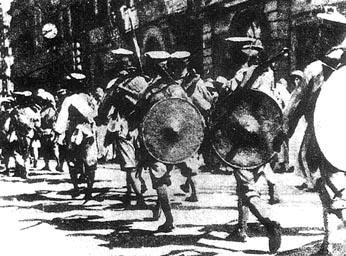
On July 27, 1937, just weeks after full-scale war broke out between China and Japan, a garrison of Chinese forces under the Japanese puppet East Hebei government mutinied. The Chinese switched their allegiance in a flurry of patriotic pride. What followed was a massacre.
Firsthand accounts claim that the Chinese began shooting and hacking to death Japanese and Korean civilians, and other collaborators. Other sources mention that Japanese women were found dead, many were apparently killed after being brutally assaulted. Some were abducted and dragged through the streets bound by ropes, or with wires forced through their nostrils or throats. Some of the victims’ faces were splashed with acid, corroding their skin and making them unrecognizable. Around 200 people are known to have died, while as few as 60 Japanese civilians survived.
4The Tragic Tale Of Masaharu Homma
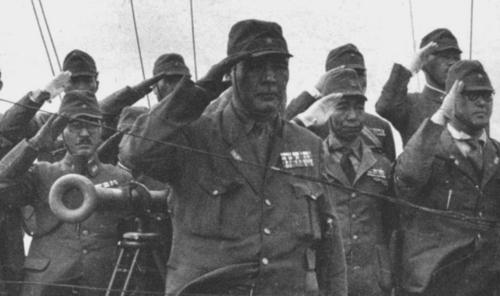
It would be wrong to simply generalize the Japanese military leadership as men who unanimously craved aggressive expansion and victory through any means. There were actually those who attempted to conduct the war in a truly honorable manner. They didn’t always succeed.
One of the saddest tales is that of General Masaharu Homma, whose brilliant and unwavering attacks dashed any hope of a successful defense of the Philippine archipelago, forcing General Douglas MacArthur to flee, and General Wainwright to surrender months later. Homma was not a fanatical militarist—he was known to have pro-Western leanings, embracing a humane approach to the grisly matter of war. It was said that he had tried his best to have the sick and wounded treated properly, but that his subordinates, hamstrung by a lack of men and supplies, failed to carry out his instructions. In fact, despite his overwhelming victory in the Philippines, Homma was often reprimanded by his superiors for his lenient treatment of enemy forces.
But someone had to pay for the horrors of Corregidor and Bataan—and it was Homma, as the commander immediately responsible, who stood trial. The man who chose the venue, the defense, the prosecution, the jury, and the rules of evidence to be presented was none other than Douglas MacArthur. Of the lawyers assigned to Homma, one had never argued a case before and another specialized in real estate. It seemed a petty act of revenge, and indeed Homma’s lawyers tried to have the case dismissed because of it. In one instance, a counsel’s description of MacArthur as “defeated by the accused” had to be changed to “who unsuccessfully opposed the accused.”
The prosecution presented several witnesses, survivors of the Death March, who told horrifying stories of beheadings, rapes, torture, and starvation. No evidence was presented proving Homma’s direct role or even knowledge of these events. One witness claimed to have seen him along the route of the Bataan Death March, but Homma’s lawyers questioned how an ordinary Allied soldier would have known what Homma looked like.
In the end, despite the pleas of his wife, Homma was convicted. While monstrous war criminals like Shiro Ishii escaped justice, the so-called “Beast of Bataan” was executed by firing squad on April 3, 1946.
3The Bodo League Massacre
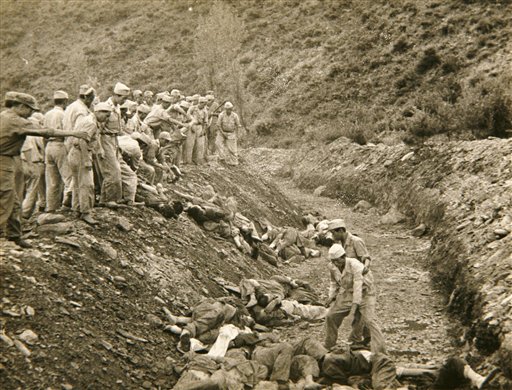
North Korea’s horrifying history of brutality and oppression is well known. But under the presidency of Syngman Rhee, the government of South Korea also committed some truly horrific crimes, usually against its own citizens.
The best-documented of these incidents was the fallout from the Jeju Uprising, which occurred before the war and saw the slaughter of as many as 60,000 residents of the island of Jeju. Other incidents have been quite forgotten—and some have only been acknowledged in the last few years.
For instance, the Geumjeong Cave Massacre of October 1950 saw an estimated 150 suspected North Korean sympathizers summarily executed by police. The Ganghwa Massacre of January 1951 left around 1,300 civilians dead. A month later Sancheong-Hamyang Massacre left 705 innocent people dead after they were mistakenly identified as guerrillas. Only a few days after that, the police would execute 700 people during the Geochang Massacre.
Perhaps the most controversial was the Bodo League Massacre, which occurred throughout the summer of 1950 and saw people suspected of having communist tendencies shot and dumped in mass graves. Estimates range from 100,000 to 200,000 civilian deaths— some of the victims were just children.
2Turning A Blind Eye To The Holocaust
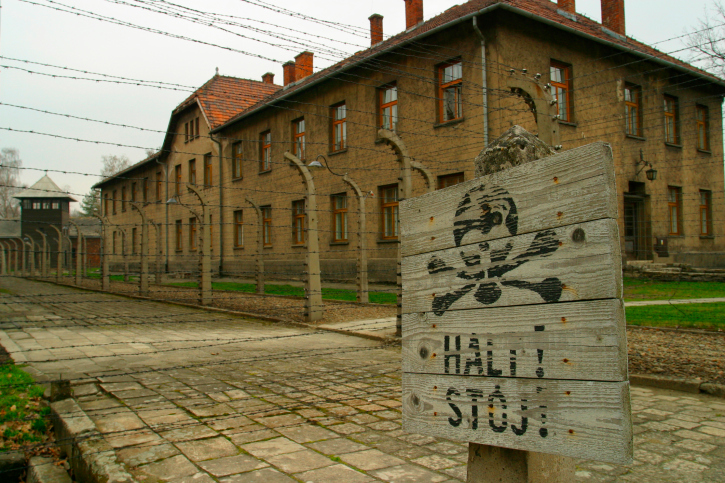
In 1942, Jan Karski, a former government employee in Poland, had a new mission in life. A member of the Polish Underground, he was tasked with informing the world about the plight of the Jews in Poland. Karski smuggled himself into the Warsaw ghetto, and later to a transit camp near the Belzec death camp. Witnessing the deplorable conditions firsthand, Karski was also informed of the gravity of the situation: “Our people will be destroyed.”
Karski was eventually able to escape to Britain, where he met with the Polish government-in-exile, Winston Churchill, and other politicians and public figures. He later traveled to the United States and had a meeting with Franklin Roosevelt and other officials. Throughout his travels, Karski repeatedly warned of the impending extermination of the Jewish people of Europe.
No one listened.
Two years later, in June 1944, Rudolf Vrba and Alfred Wexler successfully escaped Auschwitz, eventually making their way to the Allied lines. They were able to provide the military with their extensive knowledge regarding the layout of the Auschwitz-Birkenau complex, where millions of Jews and others deemed “subhuman” by the Nazis were murdered. This time people listened—and that was it. Absolutely nothing else was done.
Records show that as early as January of that year, Allied leaders were discussing a possible bombing run near Auschwitz—not to save the prisoners, but to destroy the oil and rubber installations near the camp. George McGovern, the future US Senator from South Dakota, once remarked that his squadron had been tasked to bomb facilities just a few miles from the camp, yet they received no orders to destroy anything connected to the camp itself.
Some have argued that had the Allies bombed the railways, they could have prevented the Nazis from sending millions to their deaths in the following months. Some say that destroying the crematoriums and gas chambers, while likely killing some of those held in the camps, would have ultimately saved countless lives. Others have argued that nothing would have stopped Hitler and his goons from exterminating those they deemed subhuman.
Indeed, from historians to Holocaust survivors, the debate rages on as to whether the Allies did everything they could to save the Jews—or if they merely turned a blind eye.
1Dropping The Atomic Bombs
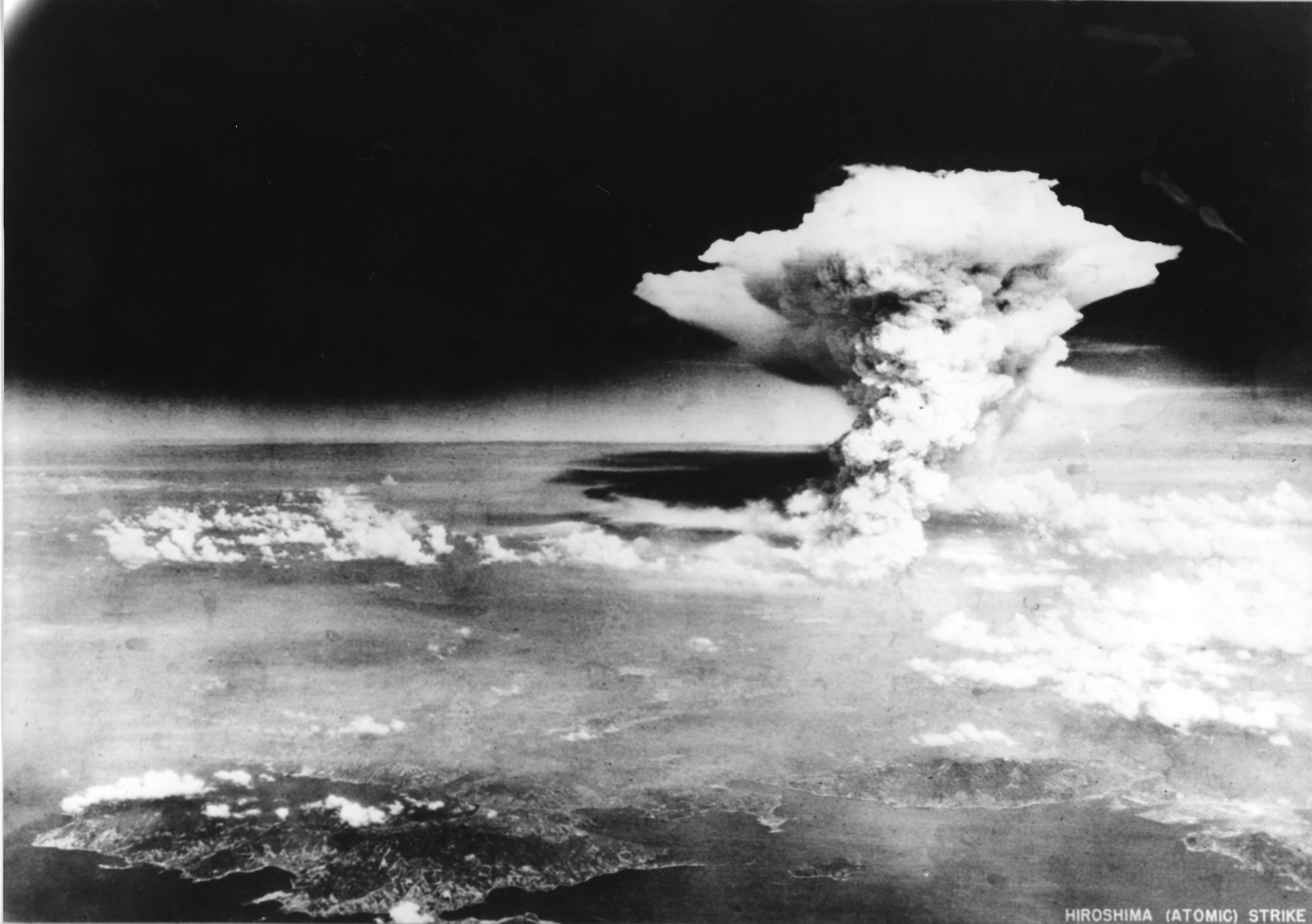
Two atomic bombs and a Soviet invasion of Manchuria forced Japan to surrender. The alternative, as we’ve mentioned, was a ground invasion known as “Operation Downfall” which would certainly have led to untold Allied casualties.
But according to many top Allied leaders, neither Operation Downfall nor the bombing of Hiroshima or Nagasaki were necessary at all. Admiral Chester Nimitz castigated the administration’s decision to drop the bomb, since: “The Japanese had, in fact, already sued for peace.” He later stated that the atomic bomb “played no decisive part in the defeat of Japan.”
Admiral Halsey considered it “an unnecessary experiment,” adding, “the scientists had this toy and they wanted to try it out, so they dropped it.” General Carl Spaatz reportedly suggested that the bombs should be dropped away from populated areas.
Winston Churchill remarked that the “Japanese homeland was in chaos and on the verge of collapse.” Admiral Leahy described the bomb as a “barbarous weapon” and said that the Japanese knew they were completely defeated due to an effective blockade. Japan’s leaders were simply looking for an honorable surrender.
Reports indicated that on July 12 and 13, 1945, Emperor Hirohito personally intervened to end the war; peace leaflets were being distributed. Indeed, Japan responded favorably to an offer of surrender based on the Atlantic Charter—which allowed the retention of the Emperor and the continuation of imperial rule. This initial suggestion was later rejected in favor of an “unconditional surrender,” in effect making the Japanese think that the Emperor would be forced to step down and be tried as a war criminal.
When the bombs were dropped, MacArthur was livid. He understood that the retention of the Emperor was paramount to peace in the region. Indeed, when surrender did come, Hirohito’s rule was allowed to continue.
Jo believes war is never as clear as “black or white”; it’s a morally ambiguous gray. What do you think? Contact him via email or in the comments section.
